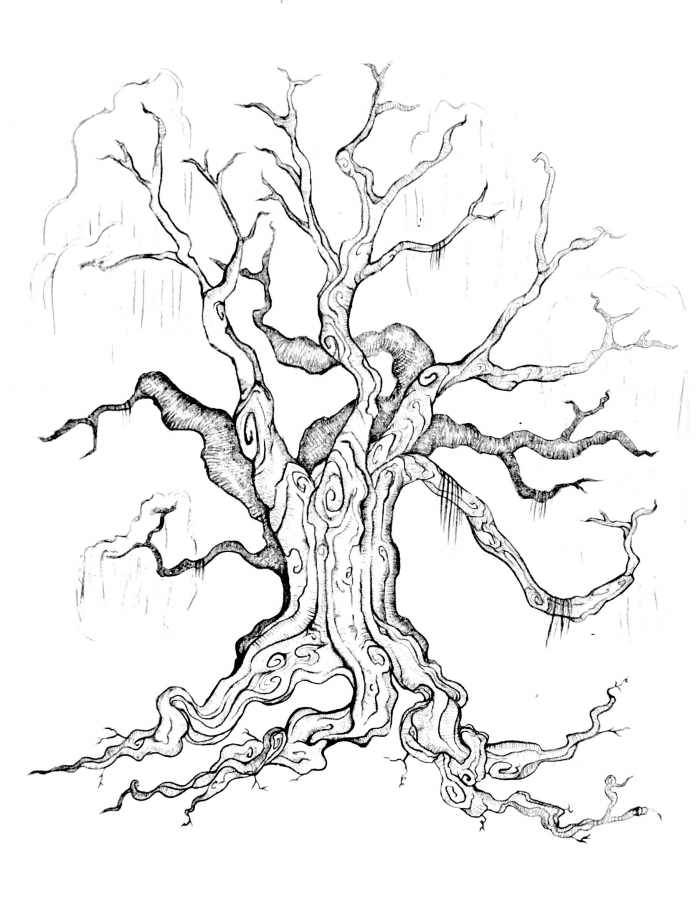Researchers at McGill, in partnership with the Université de Montréal’s (UdeM) Plant Biology Research Institute, have discovered a hidden ecosystem that works to clean polluted land. The project consisted of a collaboration between Nicholas Brereton, a research fellow at UdeM’s Plant Biology Research Institute and senior author of the study, and Emmanuel Gonzalez, a bioinformatics consultant in McGill’s Department of Human Genetics. The team demonstrated the existence of a tripartite relationship between plants, fungi, and bacteria that allows trees to break up petroleum hydrocarbons in contaminated soil. This symbiosis of sorts allows trees to thrive in stressful conditions, in which their integrity may usually be compromised.
The study, published in Microbiome in March 2018, followed the lives of willow trees planted at suburban sites in Montreal, examining their roots and soil profiles. By looking at these two factors, the researchers were able to understand the extent to which they had been affected by pollution.
“We walked in and [assumed that we] knew what the answer was,” Brereton said in an interview with The McGill Tribune. “[This is] the worst way to do science. We [assumed that] the roots established themselves and produced monooxygenases, enzymes which would degrade the oil, but they weren’t there.”
After noticing that the soil was essentially depolluted, the researchers intuitively concluded that the degree of purification was too extensive to have been the work of the tree alone.
“From a biologist’s perspective, if we had just targeted the tree, we would have walked away with the wrong story,” Brereton said. “It is a collective function. You don’t see these complicated interactions across life unless you look [closely.]”
Using differential expression, an advanced type of genetic analysis in which genes are isolated and compared to a vast database, Brereton and Gonzalez’s team was able to observe entire pathways of genetic activity.
Bacteria, which express genes in large groups, cannot be taken apart and analyzed individually through gene sequencing. To address this problem, Gonzalez developed a novel program to decode the order of these bacterial genes and the genes themselves.
“The order [of the genes] is quite important,” Gonzalez said. “If you switch the order, the story is hard to understand. This order is what told the story.”
What they found in the soil was a rich assortment of microbes and fungi, interacting with the roots of the willow tree. By conducting their research in the natural conditions of the ecosystem, the team was able to see the full scope of organismal interactions.
“The vast majority of [the] complexity is in the fungi directly interacting with the willow to create a response,” Brereton said.
Previously, researchers thought that the tree did the majority of the work in the decontamination process. According to Brereton, the study identified approximately 8,000 fungal genes in the genetic pathway that cleaned the soil, and only about 2,000 willow genes, indicating that the tree does not work alone.
The trees, fungi, and microbes not only rid the soil of pollutants, but reinvigorated it.
“Before the trees were planted, you looked at the soil and there was just nothing there, just small patches of grass,” Gonzalez said. “After a year you look and there is a whole forest.”
The willows present a new opportunity to address affordable and sustainable waste management practices. The impact of planting trees in contaminated land reaps more benefits than simply purifying the soil.
“We can use the biomass produced [by the trees] for renewable energy as well and for green chemistry, such as sustainable chemicals,” Brereton said.







If any researchers or students are interested in exploring their
sequencing data in a similar manner as this work, or just to have a chat
about the different ways bioinformatics can be used within their
research, we at C3G run an open door session 3-4pm every Thursdays in 4200
room @ Genome Quebec Innovation Center
(http://www.computationalgenomics.ca/open-door). All are welcome!